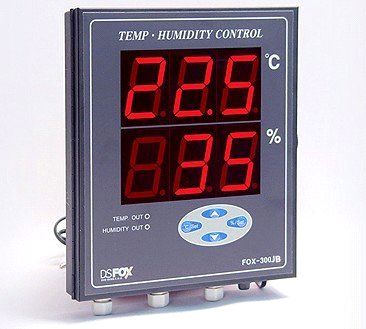+966-503462672
- Send SMS
- Send Email
Temperature And Humidity Sensor
Posted by Admin on November, 20, 2020

Often the air feels sticky after rain. The water seems to be hanging in the air. Under certain ACs, however, the atmosphere is lightened when you press on some keys. How and why is everything working? Moisture develops in the air and induces moisture. However, in your AC the humidity sensor from temperature and humidity sensor wholesale suppliers, absorbs it and controls it for you.
Sensors, monitor and records moisture and air temperature through a humidity sensor (or hygrometer). The relative humidity is the ratio of air humidity to the maximum moisture content at a given air temperature. When finding warmth, relative humidity is a significant factor.
There are three main kinds of humidity sensors:
● Capacitive -
A capacitive moisture sensor tests relative humidity, by putting between two electrodes a fine strip of metal oxide. The electric power of the metal oxide varies with the relative moisture of the atmosphere. The key fields of application are environmental, commercial, and industrial.
The sensors are linear and are ideal for measuring relative humidity between 0 and 100%. A complex circuit and routine calibration is the catch here. But designers have less trouble with accurate measurements and therefore dominate the atmosphere and the operation. Those were the only types of complete measurements for relative humidity up to 0%. This low-temperature effect also contributes to the use of effective compensation over large levels of temperature.
● Resistive -
Resistive moisture sensors use salt ions to calculate the electrical amplitude of atoms. The resistance of the electrodes on both sides of the salt medium increases as humidity varies.
● Thermal -
Due to the humidity of the surrounding air two thermal sensors conduct electricity. One sensor is covered in dry nitrogen as well as the other tests air in the atmosphere. Both determine the variation in humidity.
Parameters for judgement:
So the next move will likely be to verify its function, once you understand what this is and how it functions. But how are you doing that? By using some of the parameters listed below.
● Accuracy -
Each sensor should have its own 9 point device calibration curve. It ultimately opposes the advantages of the same sensor.
● Linearity -
It shows the voltage difference from the BFSL intensity, as well as the voltage level calculated, transformed to relative humidity.
● Reliability -
Measuring the sensor also fails to be coordinated. However, it requires accurate readings for a sensor to be effective.
● Repeatability -
The sensor measurements must not drift apart. They need to be so. Repetitiveness is the calculation of drift among single quantity variables.
● Response time -
Usually, a sensor uses the time to increase to 66% (rise time) or decrease to 33% (fall time) of the voltage value.
Final Words:
The moisture sensor applications differ greatly. Moisture sensors are used in people with humidity-affected diseases, tracking and preventive measures in houses. As part of home heating, ventilation and air conditioning systems, a moisture sensor is also found. They often are used in field offices, vehicles, libraries, industrial spaces and greenhouses and also for reporting and weather prediction in meteorological stations.
This entry was posted on November, 20, 2020 at 12 : 55 pm and is filed under Humidity and Temperature Controller. You can follow any responses to this entry through the RSS 2.0 feed. You can leave a response from your own site.
